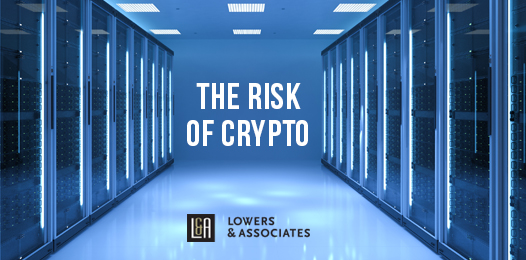
Defining the Risk of Cryptocurrency

The fundamental risk of cryptocurrency (‘crypto’), aside from market risks, is custody. Simply put, the high value of crypto, with the equivalent of over $100 billion in circulation (at this time), provides ample motivation to steal it.
Hot vs Cold Storage
If the crypto is stored in a “hot” (online) environment, strong encryption is the essential safeguard, but the entire environment must be secured. The digital asset and the private encryption key that accesses it must be stored separately. Since the online account storing the asset is generally known to the public through the blockchain, the biggest risks are hacking attacks on the online storage or theft of the private key. Whoever holds the private key controls the asset. History has shown that online storage is highly vulnerable to theft.
If the crypto or its private key are held in “cold” storage (offline)—as many experts recommend—then both digital and physical risks exist. As large and more traditional investors choose cryptocurrencies for value stores and transactions, the cold storage option is likely to increase. The need for strong encryption remains, and specific kinds of threats against digital assets, like electromagnetic radiation, have to be mitigated.
That said, once the crypto and its private key are in the physical realm, many of the risks of crypto are similar to those that apply to compact high value objects like gems, bearer bonds and cash. A small cold storage “wallet”—a digital device that might be the size of a thumb drive—can hold and transfer any amount of cryptocurrency. These tiny devices are highly vulnerable to damage or theft, and even if a thief does not get the private key, they can still hold it for ransom.
A second major source of risk to crypto is the very reason it exists: it is outside of any traditional currency ecosystem, without the insurance and security protocols that accompany fiat currencies. No institution is monitoring crypto transactions, and no law enforcement agency is routinely tracking suspicious actors. In fact, the identities of investors in crypto may not be publicly known.
Financial institutions are beginning to evolve private ways to duplicate some of the protections of traditional currencies, like Know Your Customer (KYC) and Anti-Money Laundering (AML) protocols. Cash in Transit providers are building on their experience in cash management to devise secure ways to store and transport crypto.
Crypto is still in the wild west phase. It is growing very rapidly, and a financial system is developing to make it a reasonable option to fiat currencies.
For more information about the risks of crypto, and how to manage them, request a copy of our new white paper Custodial Crypto Transportation and Storage: Understanding and Mitigating the Risks.
ABOUT THE AUTHOR